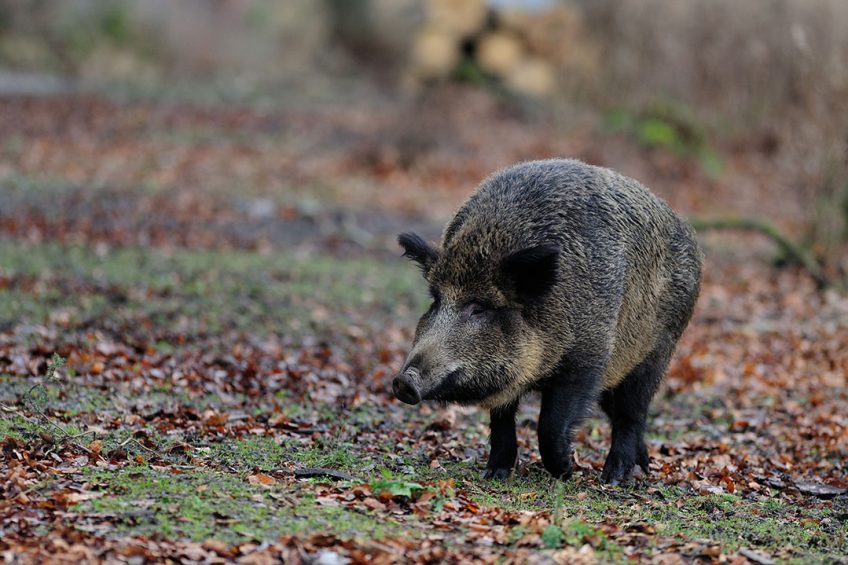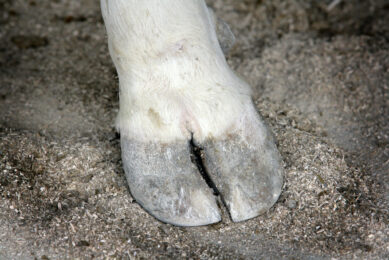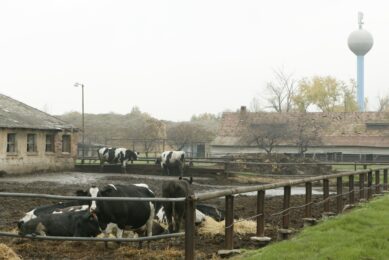ASF Germany: what is next?

It cannot have been a shock to many – yet, when it happened it sent a shiver through the pig industry: ASF has been found in a wild boar in Germany. What is going to happen, what should we look out for and what can be learnt? Pig Progress editor Vincent ter Beek searches for answers on 10 questions about this new situation.
The German authorities had barely decided to build a permanent fence to keep African Swine Fever-infected wild boar away from entering their territory from Poland and then it turns out to be too late. On Thursday September 10, the German authorities confirmed the virus in a ‘decomposed carcass of an infected female wild boar’, according to the World Organization for Animal Health (OIE).
It was found in the municipality Schenkendöbern, in the Spree-Neisse district in Brandenburg state, at about 6km from the border with Poland.
 Let’s start optimistic: Could this find be an isolated one?
Let’s start optimistic: Could this find be an isolated one?
That’s not entirely impossible. The virus was found in an ‘almost completely decomposed carcass’ according to the Friedrich-Loeffler-Institut (FLI), Germany’s reference lab. That suggests that the virus was already introduced into Germany some weeks ago, the laboratory wrote on its website. That would have given plenty of time to scavengers (including other wild boar) to spread or contract the virus. Yet, there have not been other findings of the virus, despite increased vigilance in recent months. But it is early days and no doubt over the next few days the search in the surroundings shall be intensified – so perhaps more cases will be discovered soon.
 Is it likely that there are other infected wild boar?
Is it likely that there are other infected wild boar?
That is very well possible – in this context it is good to explore wild boar behaviour a bit. Female wild boar usually live together in groups of about 3 or 4 including piglets; the groups are known as ‘sounders’. So logically, one would suspect that if 1 female wild boar got infected, more sows or piglets might have had a good chance of being exposed.

Last week, the finding of an ASF-positive wild boar was reported in Germany and immediately a set of measures were announced. Read the review back here
 How did the virus enter Germany?
How did the virus enter Germany?
Now that is an interesting question, to which no easy answer can be given. The ‘German’ infection occurred at 30km away from the nearest-known finding site of a positive wild boar in Poland. That is a relatively long distance for the virus to make a ‘natural’ jump, given that most outbreaks occur relatively close to each other, see also the map.
The FLI pointed in its analysis to a migrating wild boar. Male wild boar are known for roaming solitarily over substantial distances – but here’s the thing, it was the carcass of a female animal. Could birds have played a role as mechanical vectors? The FLI also does not rule out the role of humans that might have thrown away contaminated pork.
 How will non-EU countries respond?
How will non-EU countries respond?
Seven international partners for now have already responded with closing their borders for German pork: In Asia these are China, South Korea, Japan and the Philippines; in Latin America Mexico, Brazil and Argentina – and most probably more will follow. Pork exports to these countries require a statement that Germany is free from ASF and that cannot be provided now. All in all, a heavy blow for the German swine industry – as pork in Asia is in high demand due to ASF as well; it has led to record high pig prices over 2019.
According to news agency Reuters, Germany was the 3rd largest supplier of pork in China so far, covering 14% of the imports, woth € 1 billion/year. The German authorities are in discussion with the Chinese to adopt a regionalisation approach, similar to the EU countries (see also question 6).
South Korea, the 2nd largest non-EU buyer of German pork, was the first country to announce a closure of the markets for German pork.
Indirectly, pork powerhouses Denmark and the Netherlands will also feel the knock-on effect as they send many piglets for growing to Germany.
 What will be the effect on pig prices in Germany?
What will be the effect on pig prices in Germany?
They are dropping, seeing that export markets are fading away in the near future, causing a disruption in supply and demand. In Germany, something similar is happening at the moment – last Friday, a drop of pig prices was already reported in Germany, as slaughterweight pig prices fell by 13.6% to € 1.27/kg once the news broke, news agency Reuters reported. In Belgium in 2018, prices fell in a few weeks from € 1.36 to € 1.09 dead weight.
 How will other EU countries respond?
How will other EU countries respond?
Calmly. Inside the European Union, the situation is known – it is a wild boar, no domestic pig, and a system of regionalisation is agreed on. Within the EU everyone acknowledges that Germany’s major pig producing states like Lower Saxony or North Rhine Westphalia are hundreds of km away from this one finding site, and that an outbreak in wild boar is something different than an outbreak in domestic pigs. Therefore, the outbreak shall not affect within-EU shipments.

Read more about pig production in Germany
Interesting in this context is e.g. to see how Denmark responded. The country, mostly shipping weaner pigs to Germany, has a strict biosecurity system for washing empty trucks when returning to the country. As a result of the find, part of Eastern Germany was recently coloured ‘black’ as can be seen in the tweet below. That entails additional, stricter procedures, i.e. quarantine and no direct visits to farms.
⚠️DANISH Transport Standard: New black zones due to https://t.co/CcEUl5yaub #transport pic.twitter.com/wNlz2NDZbw
— Asger Kjær Nielsen (@AKN_VSP) September 12, 2020
 Who will profit from the international trade bans?
Who will profit from the international trade bans?
Other exporting countries will most likely step in to fill the gap.
Within Europe, the star of Spain’s pig industry has been rising fast over the last few years, overtaking Germany as number #1 pig production country. For instance, Spain contributed to 17% of total pig meat imports to China in the 1st 6 months of 2020, according to figures from the Chinese Ministry of Agriculture and Rural Affairs (MARA).
Similarly, the United States took care of 19% of pig meat imports to China in the 1st half year. Most likely these 2 countries, as well as Brazil and Canada will be happy to step up their pork exports.
 What does the outbreak tell about the spreading speed?
What does the outbreak tell about the spreading speed?
The first outbreak of ASF in wild boar in Poland occurred near the town Szudzialowo in Poland’s north east, on February 13, 2014. It took the virus 6.5 years to cross Poland and reach Germany – as the crow flies, the distance to Eastern Germany’s Schenkendöbern municipality is 625km. I know the move of the virus westward did not go gradually, and must have been greatly helped by some humans to give the virus a lift Western Poland late 2019. Nevertheless, we can conclude now that the virus crossed through Poland with an average speed of 100km/year.
 How can the outbreak be controlled?
How can the outbreak be controlled?
The Czech Republic has shown that it is possible to limit the outbreaks of ASF in wild boar with a decent and well-devised strategy that requires coordination, funding and total transparency, including fencing and intelligent hunting. The Czech Republic was declared free from ASF early 2019 again. Belgium followed the Czech example; that country hopes to regain its ‘free from ASF status’ back this coming autumn. In both countries, the domestic pig herd never got affected.
 How long is this all going to take?
How long is this all going to take?
In order to get the status ‘free from ASF’ back again, countries have to prove that the virus is gone from its wild boar population for at least 12 months. It will entirely depend on how well Germany shall manage to keep the situation in wild boar under control.
So far, the record has been set by the Czech Republic, there it took just over 1.5 years to get back on track. The first outbreak was reported in June 2017, and the last (emaciated) positive carcasses were found in April 2018. The EU officially declared the country officially free from ASF late February 2019.












